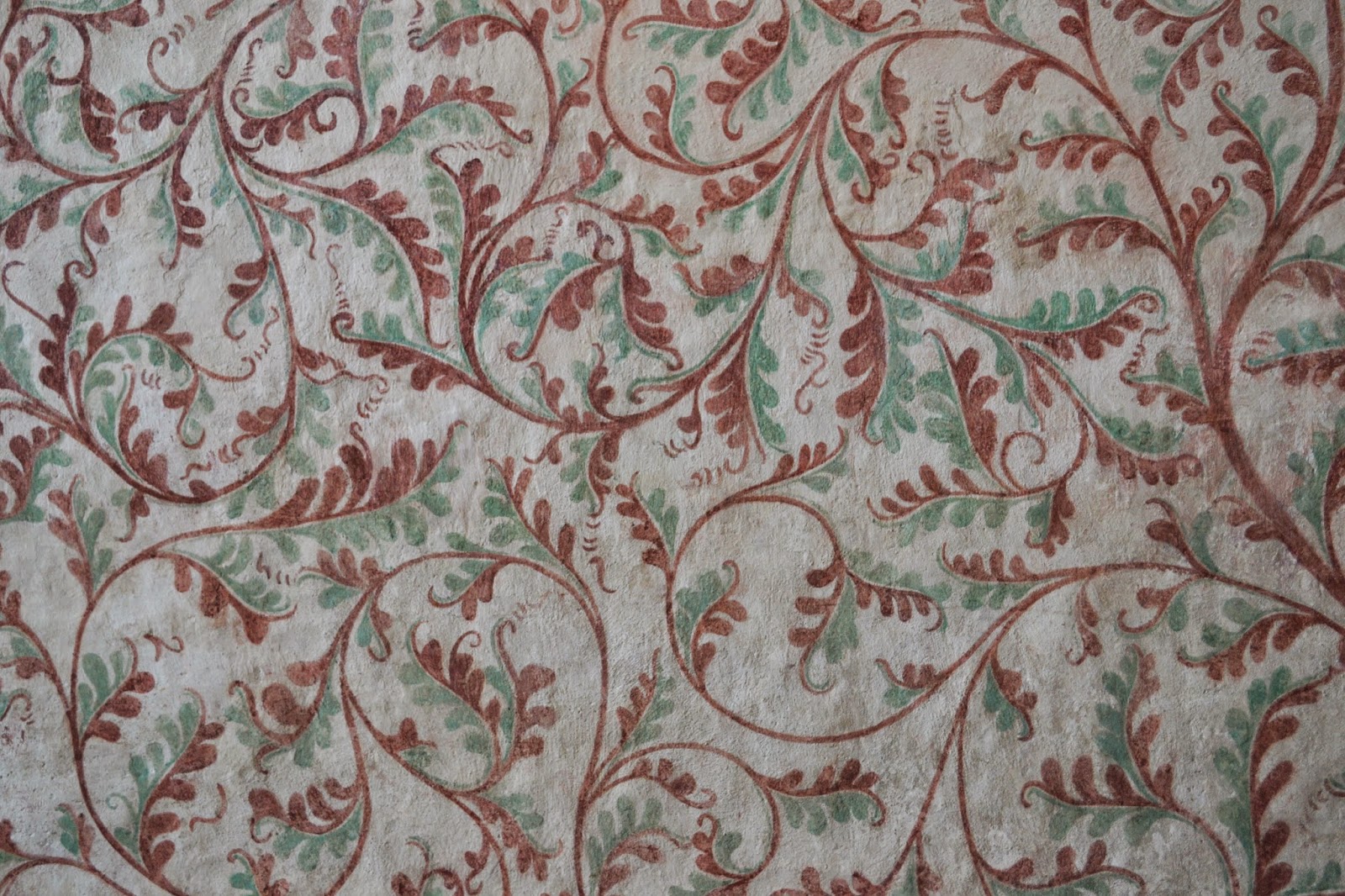After arriving in Copenhagen we immediately rented a car and drove to Roskilde. Roskilde is in Zealand (Sjaelland), about a half hour drive from Copenhagen. Roskilde is the site of The Viking Ship Museum.
(You may have heard of Roskilde because it is also the site of the largest outdoor rock concert in Europe, held every June).
The museum houses the remains of 5 Viking ships (called all together "Skuldelev" named after the town north of Roskilde where they were found). The Vikings would block a fjord from attack by scuttling ships in the fjord; a rather passive and effective strategy for a bellicose people. These ships were submerged between 1070 and 1090, discovered by a fisherman in the 1920's, and were excavated in 1962. Those Vikings built different types of vessels for different purposes. More on the Skuldelev here.
To my delight, there was a small display on how the sails were woven. Sails were woven on a warp weighted loom. (The horizontal loom was not developed until the mid 14th century i.e. [I always must look this up!] around or about 1350).
The fibers on display were hemp, nettle, and flax although wool was used in Viking square sails as well. Here is a fascinating article on the subject complement of The International Journal of Nautical Archeology. Or at least I found it fascinating until I got to the part about warp and weft strength that involved math equations.
The museum has a boatyard that builds reconstructions of Viking boats with the method of the time, as well as new boats using old tradition, and repairs old boats.
Later in the trip I went to the National Museum of Denmark. They of course had a wonderful exhibit on the Vikings. At the beginning of the exhibit there was commentary on the Viking discoveries, and how with the loss of Norway in 1814 and southern Jutland in 1864, the national spirit and identity were boosted by discoveries of the Vikings finds which happened in that century.
Later that day we went to the Roskilde Cathedral; it s a cathedral of the Lutheran Church of Denmark dating to the 12th and 13th centuries. It was the first Gothic cathedral build of brick in Northern Europe. It also incorporates Romanesque features. There are numerous crypts in the cathedral which was used for burial of Danish royalty for.
(You may have heard of Roskilde because it is also the site of the largest outdoor rock concert in Europe, held every June).
The museum houses the remains of 5 Viking ships (called all together "Skuldelev" named after the town north of Roskilde where they were found). The Vikings would block a fjord from attack by scuttling ships in the fjord; a rather passive and effective strategy for a bellicose people. These ships were submerged between 1070 and 1090, discovered by a fisherman in the 1920's, and were excavated in 1962. Those Vikings built different types of vessels for different purposes. More on the Skuldelev here.
To my delight, there was a small display on how the sails were woven. Sails were woven on a warp weighted loom. (The horizontal loom was not developed until the mid 14th century i.e. [I always must look this up!] around or about 1350).
Here's a very happy tourist:
The fibers on display were hemp, nettle, and flax although wool was used in Viking square sails as well. Here is a fascinating article on the subject complement of The International Journal of Nautical Archeology. Or at least I found it fascinating until I got to the part about warp and weft strength that involved math equations.
A reproduction vessel with a Viking Square sail:
You could also dress up like a Viking if you wished:
The rope making display was pretty interesting as well for someone like myself who is interested in twisting fibers
The museum contains the remains of the vessels. Viking ships were "clinker built" also called "lapstrake" in which the hulls were built of boards which overlapped. More info here.
Later in the trip I went to the National Museum of Denmark. They of course had a wonderful exhibit on the Vikings. At the beginning of the exhibit there was commentary on the Viking discoveries, and how with the loss of Norway in 1814 and southern Jutland in 1864, the national spirit and identity were boosted by discoveries of the Vikings finds which happened in that century.
Later that day we went to the Roskilde Cathedral; it s a cathedral of the Lutheran Church of Denmark dating to the 12th and 13th centuries. It was the first Gothic cathedral build of brick in Northern Europe. It also incorporates Romanesque features. There are numerous crypts in the cathedral which was used for burial of Danish royalty for.























Wow great post Wendy! Enjoy beautiful Denmark. I would love to travel again :-))
ReplyDeleteThanks, Jody!
ReplyDelete